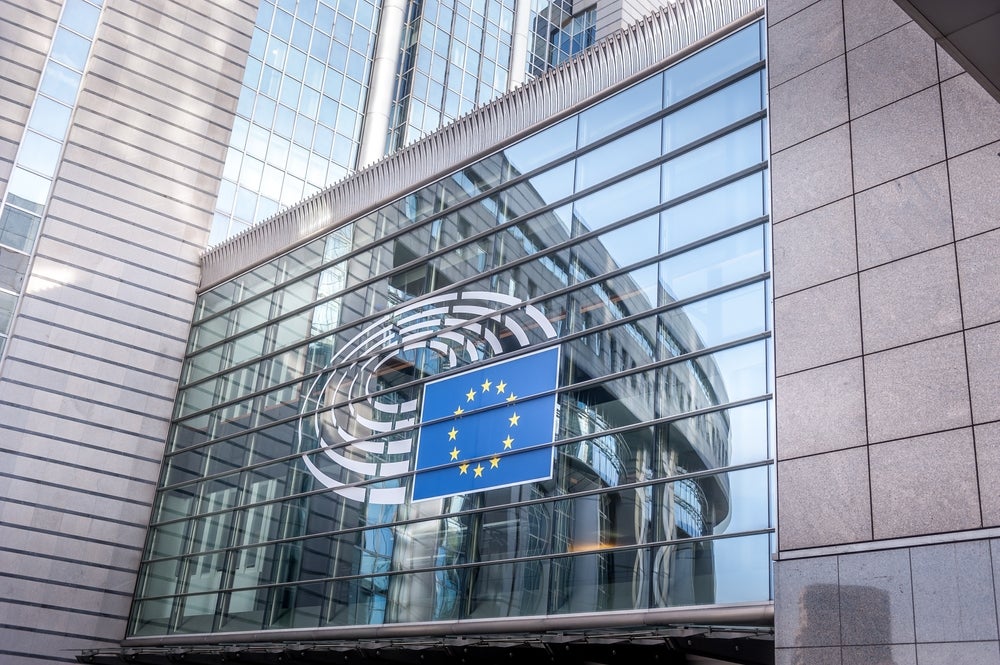
With sustainability concerns among consumers projected to heighten post-Covid, a new report has outlined two circular investment opportunities – including rental and resale – that can help pave the way for a more resilient and environmentally beneficial fashion industry of the future.
The industry, and the apparel sector specifically, have been among the consumer good sectors most deeply affected by the pandemic. All in all, a 27–30% reduction on year-on-year revenues for the global fashion industry is predicted for 2020.
Investments in circular economy opportunities that promote increased utilisation over increased consumption can offer attractive opportunities for the industry to meet the new challenges posed by the pandemic, according to the Ellen McArthur Foundation (EMF).
The organisation has published a series of policy and investment insight papers, exploring how such strategies can help build a resilient, low carbon, and prosperous recovery.
“The Ellen MacArthur Foundation sets out a vision for fashion, where clothes are used more, made to be made again, from safe, renewable and recycled inputs,” the EMF says. “In order to more rapidly move towards this vision, investments could be directed towards areas including: rental and resale business models; collection, sorting, and revalorisation infrastructure; material innovations to improve durability, recyclability and reduce microplastic leakage; and digital technologies to better track and trace resources.”
See Also:
Though EMF says all of these investment areas can help pave the way for a more resilient and environmentally beneficial industry, it highlights two particular opportunities:
How well do you really know your competitors?
Access the most comprehensive Company Profiles on the market, powered by GlobalData. Save hours of research. Gain competitive edge.

Thank you!
Your download email will arrive shortly
Not ready to buy yet? Download a free sample
We are confident about the unique quality of our Company Profiles. However, we want you to make the most beneficial decision for your business, so we offer a free sample that you can download by submitting the below form
By GlobalData- Rental and resale business models
- Collection, sorting, and revalorisation infrastructure
Rental and resale business models
Investing in circular business models that keep products in use through rental and resale can be an effective way to enable a faster and more future-proof recovery and growth plan for the fashion industry, EMF says, adding such investments can also generate numerous economic benefits.
“By enabling the same item to be obtained and utilised by many customers over its lifetime, clothing rental and resale models can increase the revenue stream per garment when compared to traditional linear models, which rely on volumes sold to generate revenue.
“The increased utilisation rate, combined with the lower costs that may be achieved as raw material needs are reduced, also allows for a lower price point per garment (sale or rental). As such, resale and rental models can be used as effective tools for tapping into new, more price-sensitive customer segments. This may be particularly valuable moving forward as the post-pandemic economic uncertainty is expected to increase the share of customers in this segment significantly.”
These business models are supported by a change in customer sentiment around apparel consumption and ownership, EMF adds, citing a McKinsey study that shows 21% of customers want to reduce their clothing consumption following the pandemic.
What’s more, rental and resale models can also offer environmental advantages. For instance, a 5–10% reduction in a garment’s carbon, water, and waste footprint has been shown to be attainable by extending its lifetime by a mere three months, assuming garment purchasing is subsequently decreased as well, the paper states.
Meanwhile, EMF explains policymakers are also increasingly drawing their attention to the environmental impacts of the fashion industry. The French Circular Economy Law already bans the destruction of unsold or customer returned items, while groups like the UN Alliance for Sustainable Fashion and the OECD Due Diligence Guidance for Responsible Supply Chains in the Garment & Footwear Sector have been formed to address the fashion industry’s sustainability issues, it says.
“This mounting pressure, paired with the accelerating customer demand for environmentally responsible clothing, affects the whole fashion industry and further enhances the attractiveness of new business models—such as rental and resale—as investment opportunities.”
Specifically, EMF says an increased use of digital technologies will allow a greater uptake of such business models.
“With the accelerated rise of fashion e-commerce since the outset of the pandemic, investments into digital technologies will be needed to enable this. The development of e-commerce platforms facilitating the rental and resale of clothing will be crucial, and allow smaller brands and creators easier access to markets, thus potentially positively impacting job creation.”
However, to attract customers to these platforms, EMF says simple userfaces are crucial as consumers have become increasingly overwhelmed by the amount of choice.
Design will also play a key role, as apparel must feature durable and non-hazardous materials that can sustain several use cycles, and be seasonless or feature greater adaptability to avoid premature obsolescence.
Collection, sorting, and revalorisation infrastructure
Wasted garment and fabric leftovers account for a quarter of industry resources, according to EMF, which adds the pandemic has only exacerbated these issues with the amount of deadstock rising on the back of cancelled orders.
“If these inventories are not repurposed or saved before next year, the risk of an increase in the total amount of waste is high as businesses may destroy their products to avoid flooding the market. If instead of incineration or landfill, these materials were captured and recirculated, the lost value of textile waste amounting to more than US$100bn annually could be retained, whilst new jobs in collection, sorting and recycling facilities could be created. Increased collection, sorting and recycling rates of clothing could also lower costs.”
EMF points again to the importance of design, noting conscious decisions concerning material durability, garment construction, and item processing will have to be made.
Like resale and rental, increased collection, sorting and revalorisation of clothing can also generate many environmental benefits such as helping to lower the strain placed on natural resources caused by the cultivation and manufacture of virgin inputs.
“Additionally, the largely detrimental methane releases, and potential groundwater contamination through leached dyes and chemicals can be avoided as textiles at the end of their first life get redirected away from landfills. By reducing the environmental burden and lowering emissions, greater clothing recycling can thus also help mitigate against the future risk of climate emergencies,” EMF says.
To attain these benefits, the paper states critical investments are required in areas including the creation of an effective, interconnected textile waste revalorisation network that can operate at scale. EMF says current structures are “often characterised by fragmentation and are thus ineffective in collecting, sorting, and recycling products in the volumes required.”
Equally important is ensuring infrastructure is developed in all areas where clothing waste is created and ends up—especially where none currently exists—if large scale transformation is to be achieved.
Technological infrastructure should also be prioritised, especially in order to improve clothing sorting and recycling, EMF adds.
“The pandemic has upended the fashion industry, creating mass-scale supply chain disruptions, while making people re-evaluate their shopping habits. Heightened price-sensitivity following the economic downturn and increased concern over the resource-intensive and wasteful nature of the current linear fashion system is projected to become more prevalent among customers.
“To respond, the industry will need to develop new solutions. As they respond to the needs of the current situation and fit with projected future trends, models that move away from making and selling more, and move towards using more, could be highly attractive. The circular investment areas of rental and resale business models and’collection, sorting and revalorisation infrastructure can offer attractive opportunities for putting such models in place. Such investments will help shape a fashion industry that is not only more in tune with its customers, but also more resilient and environmentally beneficial.”







